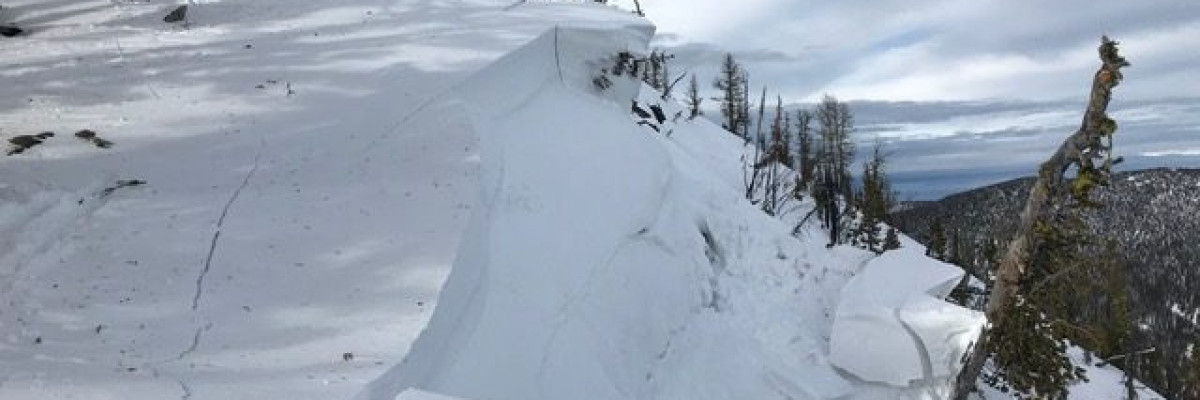The current avalanche danger is High in the west central Montana backcountry on wind loaded slopes. Travel on wind loaded slopes or in runout zones is not recommended today. All other slopes are considerable.
Good morning, this is Travis Craft with the West Central Montana Avalanche Center’s avalanche advisory for December 19, 2018. This danger rating does not apply to operating ski areas, expires at midnight tonight and is the sole responsibility of the U.S. Forest Service.
Weather and Snowpack
Mountain temperatures range from 12 F to 33 F in the region. In the Bitterroot winds are 10 mph with gusts of 15 out of the South. In the northern part of the advisory area, winds are reading 14 mph with gusts of 23 mph out of the North. The forecast area received 6 to 14 inches of new snow in the last 24 hours. The SWE totals range from .8 to 1.3 inches.
The primary concern today is wind slabs. The forecast area had high winds yesterday with a lot of snow available for transport. Look for snowdrifts and smooth, rounded deposits of snow on ridgelines. Avoid traveling on wind drifted terrain. Do not travel in runout zones below wind loaded terrain.
The second avalanche problem is persistent slabs. Look for red flags such as whumpfing, collapsing and shooting cracks. Dig a pit to the ground and look for our buried layers and see how reactive they are in stability tests. Avoid traveling under runout zones and think of what terrain is above and below you. The layers in the snowpack are reactive to human triggers and are widespread throughout our forecast area. Travel and recreate on slopes less than 25 degrees.
The third avalanche problem is storm slabs. The new snow will need time to bond with old snow surfaces and could potentially step down into buried weak layers causing a much larger avalanche.
Bottom line the snowpack is weak and can not be trusted with the additional loading of new snow and wind. Recreate on low angle terrain and pay close attention to changing weather conditions. Choose terrain that is simple (not connected to steeper slopes or in a runout zone) and low angle(>25 degrees).
Avalanche and Weather Outlook
The forecast area will have light accumulations of snow till late this afternoon. See the forecast here. Look for the avalanche danger to stay the same with these conditions.
If you do make it out into the hills feel free to share what you see on our public observations page. They are not only helpful to your community but extremely helpful to us.
Ski and ride safe.














